Ski: 2022-2023 Black Crows Mirus Cor, 178.0 cm
Test Location: Mt. Crested Butte, Colorado
Days Skied: 20
Available Lengths: 168.3, 173.2, 178.0, 184.2 cm
Blister’s Measured Tip-to-Tail Length (straight-tape pull): 176.5 cm
Stated Weight per Ski: 1800 grams
Blister’s Measured Weight per Ski: 1796 & 1838 grams
Stated Dimensions: 134-87-123 mm
Blister’s Measured Dimensions: 133.2-86.7-122.8 mm
Stated Sidecut Radius (all lengths): 13 meters
Measured Tip & Tail Splay (ski decambered): 50 mm / 40 mm
Measured Traditional Camber Underfoot: 2.5 mm
Core: poplar + partial titanal plate + fiberglass laminate
Base: sintered
Factory Recommended Mount Point: -3.85 cm from center; 84.4 cm from tail
Boots / Bindings / Wax: Tecnica Mach1 MV & LV 130, Atomic Hawx Ultra 130 / Salomon Warden MNC 13 / mountainFLOW All-Temp Hot Wax & Quick Wax
[Note: Our review was conducted on the 21/22 Mirus Cor, which returns unchanged for 22/23, apart from graphics.]

Intro
There’s nothing “typical” about the Black Crows Mirus Cor.
New for the 2021-2022 season and returning for 2022-2023, this 87mm-waisted ski is meant to “change the normal practice and innovate with a boost of creativity.” Just looking at the Mirus COR, that bold statement doesn’t actually seem that far off.
We’ve discussed this ski and the whole 21/22 Black Crows lineup in our Blister Summit Brand Lineup video, and now having skied it in everything from late-spring slush to early-season groomers, it’s time for our full review.
What Black Crows say about the Mirus COR
“A brand new UFO, the Mirus’ Cor is a ski thought for performance and design, to achieve an alliance between two worlds: freestyle and the most angular curves of today. Built with a fairly long rocker and a split tail, it allows short curves for playing, for piste, and for the side of the ski run, it is carving in a black crows approach and/or all terrain freestyle. Accessible, well-built and creative from any point of view.
Carving and freestyle are two things that we rarely see emphasized when discussing a single ski, but as we’re about to discuss, the design of the Mirus Cor certainly backs up these claims. The Mirus Cor is supposed to both encourage a playful approach to the mountain, and be able to lay down high-edge-angle carves. It’s pretty safe to place it in the growing category of what I’m just calling “fun carvers” (with others like the Line Blade and Armada Stranger), but even compared to those skis, the Mirus Cor is very different.
Construction
This is one of the only things that’s not unusual about the Mirus Cor. It’s got a poplar wood core, a titanal plate around the binding area, and a fiberglass laminate. Pretty simple, but things quickly get more radical:
Shape / Rocker Profile
Even if you don’t focus on its split tail, the shape of the Mirus Cor is pretty striking. It’s got very wide, spatula-esque (the utensil, not McConkey’s ski) tips and tails. I legitimately couldn’t help myself from trying to flip little snow “burgers” when I was waiting in line on the Mirus Cor. And hey, if a ski makes waiting in lift lines more entertaining, I’m all for it.
Those wide ends narrow a whole lot as you move to the middle of the ski, creating a very tight sidecut radius.
Then there’s the Mirus Cor’s split tail. It’s a pretty narrow notch and doesn’t have a metal insert like the Line Sakana, but it definitely catches your eye. And talking with Black Crows, that was the main goal with it — aesthetics.
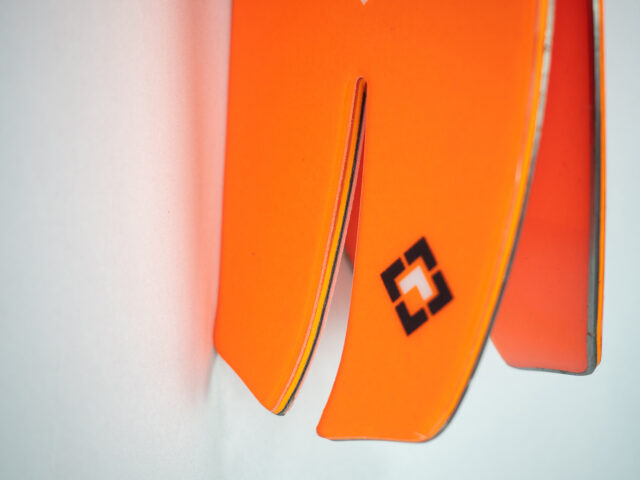
The Mirus Cor’s rocker profile is also nothing like the majority of 87mm-wide skis on the market. It has deeper rocker lines than any similarly narrow ski I can think of, and its tip and tail rocker lines are basically symmetrical. And that split tail is also basically a true twin.
So we’ve got a shape that’s roughly reminiscent of a slalom ski, paired with the rocker profile of a much wider all-mountain freestyle ski. Interesting.
Flex Pattern
Here’s how we’d characterize the flex pattern of the Mirus Cor:
Tips: 7-6.5
Shovels: 6.5
In Front of Toe Piece: 7-9
Underfoot: 9.5
Behind the Heel Piece: 9-7.5
Tails: 7
The main thing that stands out with the Mirus Cor’s flex pattern is that it’s relatively soft outside of the binding area. The very ends of its tips and tails aren’t actually super soft, but there’s a pretty slow, gradual ramp-up in stiffness as you move from those ends to the middle of the ski. I did the flex pattern numbers after my first day on the ski and I was actually surprised it didn’t feel softer when flexing it by hand — on snow, it feels very easy to bend the majority of the ski.
Sidecut Radius
As we alluded to above, the Mirus Cor has a very tight sidecut radius — Black Crows say that it’s 13 meters across all available lengths of the ski. That’s basically on par with the Line Blade, and a bit tighter than the Armada Stranger. From first glance, it’s pretty obvious that the Mirus Cor is going to want to carve hard and tight, rather than make big, drawn-out arcs.
Mount Point
Another point of differentiation — the Mirus Cor has a recommended mount point that’s only about -3.8 cm from the true center of the ski.
That’s a mount point we’re more used to seeing on park and all-mountain freestyle skis, not narrow carving skis. But, it does fit with the description from Black Crows.
Weight
Similar to — and likely as a result of — the Mirus Cor’s straightforward construction, this ski’s weight isn’t particularly out of the ordinary. Our pair of the 178 cm Mirus Cor came in at about 1817 grams per ski, which is neither extremely heavy nor extremely light for a ski of its size. It’s a bit on the lighter side of things, but it’s got plenty of close company, weight-wise.
For reference, here are a number of our measured weights (per ski in grams) for some notable skis. Keep in mind the length differences to try to keep things apples-to-apples.
1728 & 1750 Renoun Atlas 80, 177 cm (19/20–20/21)
1758 & 1758 Head Kore 93, 180 cm (19/20–20/21)
1790 & 1828 Black Crows Orb, 179.1 cm (19/20–21/22)
1796 & 1838 Black Crows Mirus Cor, 178 cm (21/22)
1798 & 1815 DPS Pagoda Piste 94 C2, 178 cm (20/21–21/22)
1801 & 1839 Salomon Stance 90, 176 cm (20/21–21/22)
1810 & 1828 Armada Declivity 92 Ti, 180 cm (20/21–21/22)
1849 & 1887 DPS Pagoda Piste 90 RP, 184 cm (20/21–21/22)
1855 & 1877 Liberty Evolv 90, 186 cm (19/20–20/21)
1863 & 1894 Blizzard Rustler 9, 180 cm (18/19–21/22)
1911 & 1917 K2 Disruption 82Ti, 177 cm (20/21–21/22)
1935 & 1964 DPS Pagoda 100 RP, 184 cm (21/22)
1937 & 1945 Fischer Ranger 94 FR, 184 cm (19/20–21/22)
1947 & 2022 Liberty V92, 186 cm (19/20–20/21)
1952 & 1958 Renoun Endurance 88, 184 cm (21/22)
1990 & 2036 Blizzard Brahma 88, 177 cm (20/21–21/22)
1999 & 2060 Line Blade, 181 cm (20/21–21/22)
2008 & 2015 Folsom Spar 88, 182 cm (18/19–20/21)
2043 & 2089 Volkl M6 Mantra, 177 cm (21/22)
2049 & 2065 Volkl M5 Mantra, 177 cm (18/19–20/21)
2098 & 2105 Nordica Enforcer 88, 179 cm (19/20–21/22)
2131 & 2194 Nordica Enforcer 88, 186 cm (19/20–21/22)
2178 & 2195 Volkl M6 Mantra, 184 cm (21/22)
2235 & 2236* Elan Wingman 86 CTi, 184 cm (19/20–21/22)
*weights include binding mounting plates
Some Questions / Things We’re Curious About
(1) With most skis we can form some initial expectations based on their design. But given how different the Mirus Cor is in so many ways, the main question is just “what does this thing actually feel like when you get it on snow?”
(2) With its pretty centered mount point, are directional skiers going to be put off by the type of skiing stance the Mirus Cor encourages? Can you ski it with a more traditional forward stance?
(3) Most ~87mm-wide skis are designed for edge hold and precision on firm snow, so how will the Mirus Cor handle icier sections of snow?
(4) On the flip side, will the Mirus Cor’s fat shovels and deep rocker lines make it more versatile in softer conditions and off-piste terrain than other, similarly narrow skis?
(5) This ski’s mount point and rocker profile make it seem pretty freestyle-friendly, so how fun will it be in the park, and will any of its carving-oriented traits make it less ideal as a jibby, flippy, spinny ski?
(6) Just how niche is this ski? Do you have to have a big quiver of more versatile skis to justify adding the Mirus Cor to the collection? Or is this strange-looking ski more versatile than we might think?
(7) How does the Mirus Cor compare to the two other skis that share at least a similar design intent, the Line Blade and Armada Stranger?
Bottom Line (For Now)
It’s fun to know that we can still be surprised by the ski industry. While most skis share a lot in common, the new Black Crows Mirus Cor is more different than similar when compared to pretty much any other ski on the market. Blister Members can check out our Flash Review below for our initial on-snow impressions, then stay tuned for our full review after we’re able to spend a bit more time on it next season.
Flash Review
Blister Members can read our Flash Review of the Mirus Cor for our initial on-snow impressions. Become a Blister member now to check out this and all of our Flash Reviews, plus get exclusive deals and discounts on skis, and personalized gear recommendations from us.
FULL REVIEW
Groomers
Luke Koppa (5’8”, 155 lbs / 173 cm, 70 kg): Might as well kick things off where this ski really excels — groomed snow.
There are a few things that are immediately noticeable when you go out on the Mirus Cor. First is its 13-meter sidecut radius. Second is its centered mount point. Third is its fairly soft-feeling flex pattern.
All of that adds up to a ski that feels extremely engaging on piste, even on mellow slopes and moderate slopes. This ski quickly became my personal favorite during the beginning of the season, when we were lapping easy “green” groomers on man-made snow. It just made those slopes much more exciting than most other skis did.
At the same time in the season, I was also taking laps on a FIS slalom ski, and while that and the Mirus Cor both make mellow slopes pretty dang entertaining, the Mirus Cor was a whole lot more forgiving and accessible; I didn’t need to be driving it and on my A-game all the time to enjoy it.
All that said, the Mirus Cor isn’t the most intuitive ski, at least for me. When I would go for weeks without skiing it and then get back on it, it always took me several runs to get used to it again. I think a lot of this comes down to mount point, since pretty much all the tight-radius skis I’ve skied have had pretty traditional mount points that encourage a driving, forward, directional stance. But the Mirus Cor and its -4 cm mount point encourage a different approach. You can definitely initiate and drive the Mirus Cor through its shovels, but it requires notably less forward pressure and aggression to bend than skis with more rearward mount points, and there have been several times when I got too far forward over its shovels and felt them start to fold (particularly on softer groomers). So the main thing I’d have to readjust to when getting back on this ski was finding that sweet spot of driving it enough to bend the ski without overpowering it.
Each day I get on it, I eventually find that happy medium between skiing it super centered and leaning really hard into the front of my boots, and the result is a whole lot of fun. It’s a ski that I feel like I’m turning more via rolling my ankles than trying to fold my boots, and once I figure that out, I have a blast. But especially for directional skiers who are used to driving a ski hard through each turn, you should expect an adjustment period on the Mirus Cor.
Stance and technique aside, the Mirus Cor is generally just a whole lot of fun on piste — even as conditions vary. I had no problems getting it to carve clean turns on very firm early-season groomers, but I also enjoyed it in slushy spring ones. On very firm snow, it offers very good edge hold, though it doesn’t finish carves with as much power or precision as something similarly narrow with a traditional, flat tail.
It’s also more versatile than I expected when it comes to turn shapes. It’s happiest when making tight, high-edge-angle carves, but you can feather it into bigger GS turns. Of course, if big GS turns are your bread and butter, it’d make sense to go with something with a longer sidecut radius. But when I was either too lazy to keep making really tight turns or just needed to draw out a carve to avoid something in front of me, the Mirus Cor made it pretty easy to adjust.
This is also an extremely energetic ski, and that extends beyond groomed snow. Carve it hard or ram it into a bump and it will get you in the air. Along with its low-speed engagement, that’s part of why I came to love it on mellower terrain.
The Mirus Cor doesn’t match the edge hold of some similarly narrow but more “normal” skis, nor is it a great choice for making big, high-speed turns. But for those who want to carve hard, tight turns — even without driving the shovels of their skis very hard — it’s pretty awesome.
Dylan Wood (5’10”, 155 lbs / 178 cm, 70 kg): I agree with everything Luke said above, and I don’t have much to add. Rather, I think it is worth emphasizing just how engaging this ski is on mellow groomers. Like Luke, this ski was my go-to tool for making the most of early season groomers, including the long and flat Schoolmarm at Keystone. I found myself able to make pretty aggressive carved turns basically anywhere that wasn’t a cat track. The Mirus Cor allows you to take advantage of low-angle and crowded slopes because you really don’t need much real estate, pitch, or speed to get the ski on edge and bend it into a tight carve.
I also think it is worth reiterating that this ski does best with a mostly centered carving stance. Jonathan described its carving style as “mostly side-to-side,” and I would agree; the Mirus Cor isn’t a ski that needs (or even wants) you to load up its shovels to initiate a carved turn. Rather, you can carve it with a pretty flat-footed, neutral stance, rolling your ankles over to initiate the turn, as Luke mentioned. Directional skiers might struggle with this, but if you are coming from center-mounted skis and/or tend to ski with a more neutral stance, the Mirus Cor should feel pretty intuitive.
I actually had the chance to get into both a slalom and a giant slalom (GS) course with the Mirus Cor, for fun and for some calibration on turn shapes. While I found it to not be “turny” enough for a slalom course that wasn’t very turny to begin with, I was surprised by how well it handled the GS course. Not that I would recommend racing on the Mirus Cor, but it is worth mentioning this because the Mirus Cor does not feel totally restricted to tight, short turns; you can take some speed on this ski and make slightly larger, more drawn-out turns without the ski feeling hooky and taking you across the fall line involuntarily.
Moguls, Trees, & Tight Terrain
Luke: Same as on piste, the Mirus Cor always takes some getting used to for me when I take it off piste. It’s a super maneuverable ski in some regards, but less so in others.
On one hand, the Mirus Cor is easy to get on edge, has a low swing weight, a fairly soft flex pattern, and a lot of tip and tail rocker for a <90mm-wide ski. On the other hand, it’s got a very tight sidecut radius, big tips and tails, and likes to be on edge.
What all that translates to is a ski that feels really “dynamic,” but one that requires you to be a bit more attentive than other skis when skiing tight terrain. In particular, I found that I needed to pay more attention to deliberately weighting / unweighting the Mirus Cor’s tails when skiing big bumps, or else they’d hook up and launch me into the next turn a bit more than I’d like. But if I stayed centered or slightly forward and made an effort to lift the tails over the bumps, this ski felt very agile and maneuverable. Its tail is actually pretty easy to release — as long as you’re not leaning back on it. If you try to make a backseat slash, the Mirus Cor’s fat tail can dig in and take you for a ride.
Then there’s also the energy of that tail, which can be an absolute riot when I’m on top of it, and a bit unnerving when I’m not. As I’ve already mentioned, this is a ski that I generally enjoy more and more the more time I spend on it, but it often takes several runs to do so. Once I remember how much pop the back of this ski produces when bent, I come to love it and can’t help but laugh as I catch air between turn transitions. But before then, I often have some pretty sloppy runs as I try to figure out how much to load up (or not load up) its tails, lest I get sent flying into the upside of the next mogul.
The Mirus Cor is neither a loose, surfy ski nor a super locked-in one, and that means you have to kind of tread the line between either end of the spectrum to make the most of it. Depending on the size and spacing of moguls or trees, I can find myself either carving (more spaced out bumps) or slarving (tighter ones) through them on the Mirus Cor, but it takes some practice to figure out which approach this ski wants you to take. And once you do, it’s a whole lot of fun.
Dylan: Yep, the Mirus Cor is certainly no traditional ski in tight terrain, and Luke did a great job of summing up how the Mirus Cor handles these types of terrain. I personally found the Mirus Cor a bit more intuitive than Luke, but it still required me to be very attentive in moguls and trees.
It requires a dynamic approach regardless of the style you take, and feels very quick and energetic. In more widely-spaced moguls, it is a blast to carve around them, and in tighter terrain that does not permit being on edge so much, it is relatively easy to slide and slarve around, so long as you aren’t in the backseat.
Chop & Crud
Luke: This is not a very stable or damp ski. It takes a good bit of forethought and technique to maneuver through chop and crud, especially when it’s really firm and/or deep. On late-day spring groomers, where there are big piles of pushed-around snow, I need to either avoid those big piles, or plan ahead and air off them. Ramming into them accidentally usually ends up with me launching into the air more than I’d personally prefer.
That said, I’d say the suspension of this ski is fairly good for its low weight, and even on super firm, groomed, man-made snow, I didn’t find it lacking in vibration-absorption capabilities. But between its tight radius, softer flex pattern, and forward mount point, it’s just not a ski that’s good for making big, fast turns through rough snow.
Dylan: Luke is right, the Mirus Cor is certainly not a great ski for chop and crud. It takes a lot of attention to maneuver through these conditions, and it does not have good suspension in rough and firm snow.
Slush
Luke: The Mirus Cor is a bit of a mixed bag in slush. If we’re talking about “corn,” where there’s a bit of soft snow on top and a firm, supportive base underneath, it’s a riot. But in deeper, more isothermal snow, I’m often wishing for something a bit wider. This ski still wants to carve hard in soft conditions, but there were several times where I either folded the shovels or “booted out” when really laying it over in deeper slush. So how much fun you have on it in soft springtime snow depends on (1) just how soft that snow is and (2) your technique. The deeper the snow, the more I find myself skiing the Mirus Cor more centered / upright, rather than trying to drive its shovels through (and into) the deeper, softer snow.
That said, given how agile, energetic, and dynamic this ski is, it can still be a lot of fun in deep slush. You just need to be more attentive to your line choice — seeking out piles of pushed-around snow and launching off them is a ton of fun on the Mirus Cor, it’s just that running into them accidentally can be a bit scary.
Dylan: Yep, the Mirus Cor is a total blast in corn, but the deeper and more unconsolidated the slush gets, the more I’d like to be on something wider. The Mirus Cor’s relatively soft flex pattern, wide tips and tails, and narrow waist make it very easy to fold up in deep slush where the tips and tails want to stay afloat, but the waist simply doesn’t have the surface area to avoid punching through.
Playfulness
Luke: The Mirus Cor is a really playful ski overall, but it’s also not exactly what I think of when I think of a traditional “freestyle ski.”
One thing that’s blown me away is just how energetic the tail of the Mirus Cor feels. It’s far and away the easiest and best ski for little ollies that I’ve ever used. No matter how small the bump, I can always catch more air than I expect when I push back on the tails of the Mirus Cor. That makes moguls, side hits, rollers, or random piles of snow way more interesting than on most skis.
The Mirus Cor is also pretty easy to release and throw sideways for a <90mm-wide ski, and it feels super nice in the air, thanks to its centered mount point. It also skis switch pretty well, though I do find myself needing to focus more on keeping it on edge when skiing switch, rather than making big, bases-flat turns (in which case, it can feel hooky). If I skied at a place with big jumps, I doubt I’d love the Mirus Cor for that, given that it doesn’t love high-speed straight lines. But if I skied at a place with a small / medium park with tons of transitions and moderately sized features, I bet I’d love it there.
Dylan: I would most certainly call the Mirus Cor a playful ski, and I think it can be a freestyle tool for the right skier. As Luke mentioned, it is very energetic and poppy, making it super easy to get airborne. I also found it to be very balanced and easy to spin, and it skis switch very well so long as you like to carve when skiing switch. Additionally, its relatively soft and somewhat tapered tips and tails make butters totally feasible, which spices up early season groomers even more.
Luke is right in that the Mirus Cor feels best in medium to small-sized parks, such as the Ten Peaks Progression Park off the Painterboy lift here at Mount Crested Butte, or even the Lower Twister Park (which is our biggest terrain park). I never got it in such a place, but I too am pretty confident that it could feel sketchy on the biggest features of a large terrain park such as Woodward at Copper or Area 51 at Keystone.
Length
Luke: Black Crows say that the Mirus Cor is meant to be skied in shorter lengths than most all-mountain skis, and I think I’d agree. We’ve only skied the 178 cm length, which isn’t drastically shorter than most skis I like around the same width, but is notably shorter than most all-mountain skis I enjoy (which tend to be 182-190 cm). And while I initially thought it felt short, particularly the front of the ski (due to its centered mount point), I’m now very convinced that the 178 cm length is the right one for me. Especially in tight bumps, I don’t think I’d want more tail to deal with, and I think going longer would hamper the things that make the Mirus Cor so fun — namely, its pension for making tight, quick turns and getting in the air as often as possible.
Dylan: In our ski quiver articles earlier this season, I mentioned that I would probably like the Mirus Cor more in the 184 cm length. Now, I am not so sure. Like Luke, I don’t really see where going longer would benefit me, since this ski is very much designed for short, tight turns.
Who’s It For?
Luke: This isn’t as straightforward as most of our “Who’s It For?” sections, cause, well, the Mirus Cor isn’t a super straightforward ski.
I don’t think the Mirus Cor is a great 1-ski quiver for many people, unless they primarily like to make tight turns on groomers and/or ski off piste in a very dynamic, light-on-your-feet style.
However, I think it could make for a really cool addition to a lot of skiers’ quivers. It’s not trying to be a do-everything ski, and as a result, it feels very different from most other skis. It’s an absolute blast when you’re limited to skiing mellow-angle terrain, and it can also be really fun to take out when conditions are good but you’re just looking for something, well, different — especially if tight carves and lots of airtime sound appealing.
Dylan: Agreed. The Mirus Cor isn’t for everyone, but I think it could be a very fun addition to a lot of skiers’ quivers.
Bottom Line
Black Crows say that their skis with the “Cor” suffix “seek to disrupt the practice and innovate to push the creativity on the ground.” With the Mirus Cor, I’d say they accomplished that (fairly broad, ambiguous) goal, and I can’t wait to see what other “Cor” skis they come up with in the future.
As you can tell by our review, the Mirus Cor is anything but traditional, and its on-snow performance is unique. It won’t be for everyone and it definitely takes some getting used to, but once you do, it offers a ride like nothing else we’ve skied. If you like the sound of tight carves, frequent airtime, and a very dynamic ride, check it out.
Deep Dive Comparisons
Become a Blister Member or Deep Dive subscriber to check out our Deep Dive comparisons of the Mirus Cor to see how it compares to the Season Kin, Line Blade, Black Crows Serpo, Elan Wingman 86 CTi, Armada Declivity 92 Ti, Volkl M6 Mantra, Blizzard Rustler 9, Renoun Endurance 88, Blizzard Brahma 88, Folsom Spar 88, Salomon Stance 90, and DPS Pagoda 90 RP.



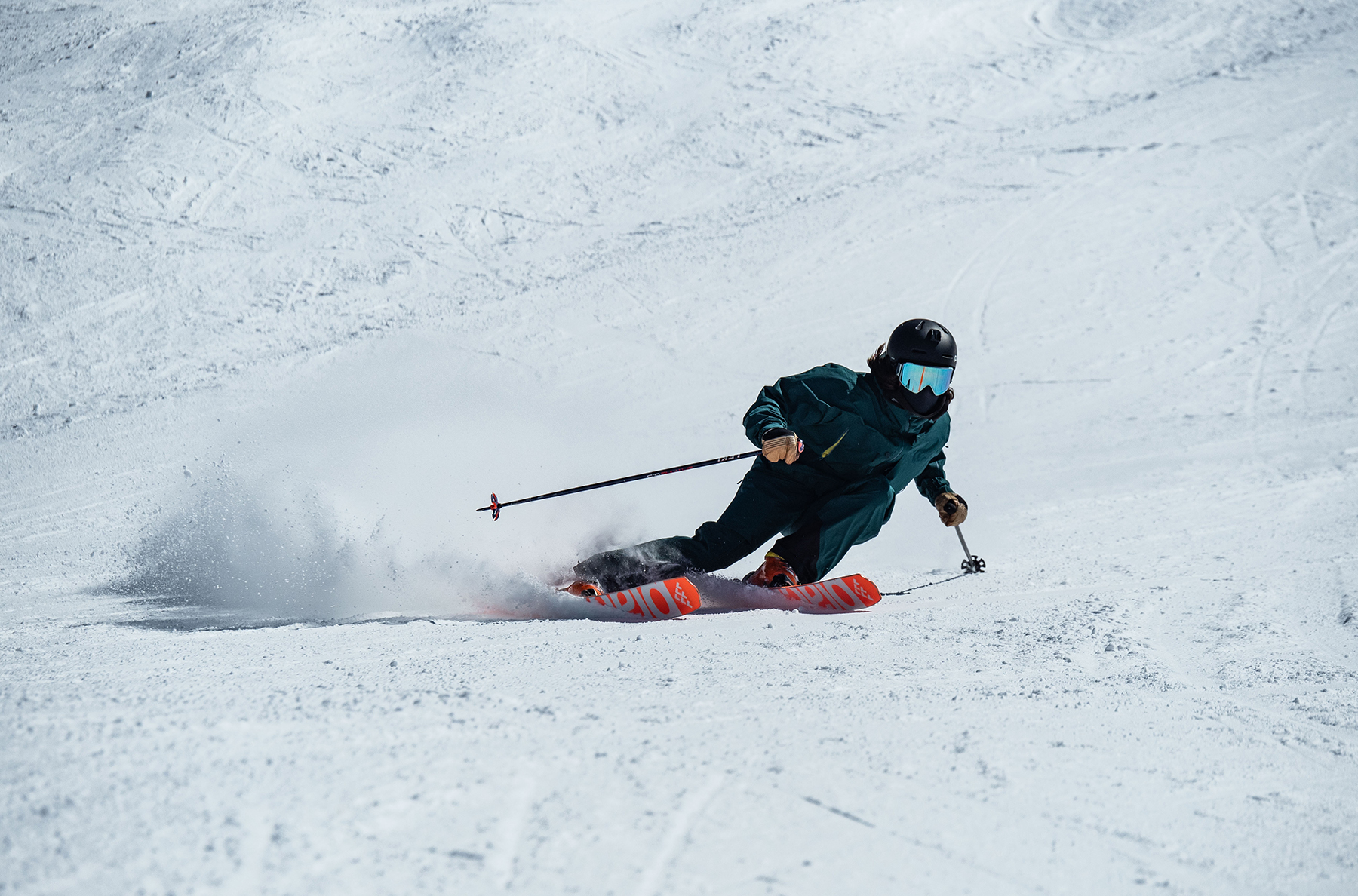
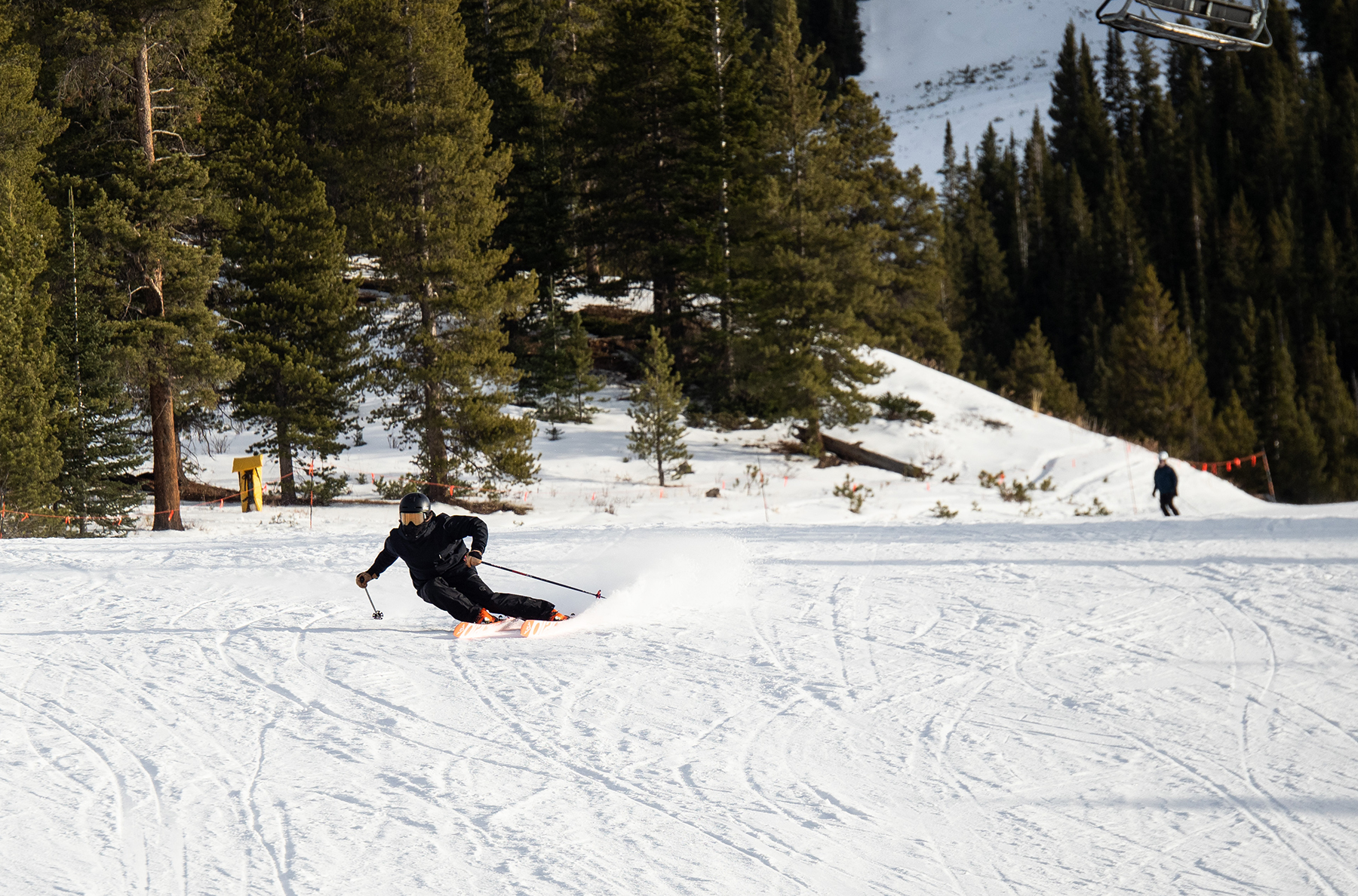
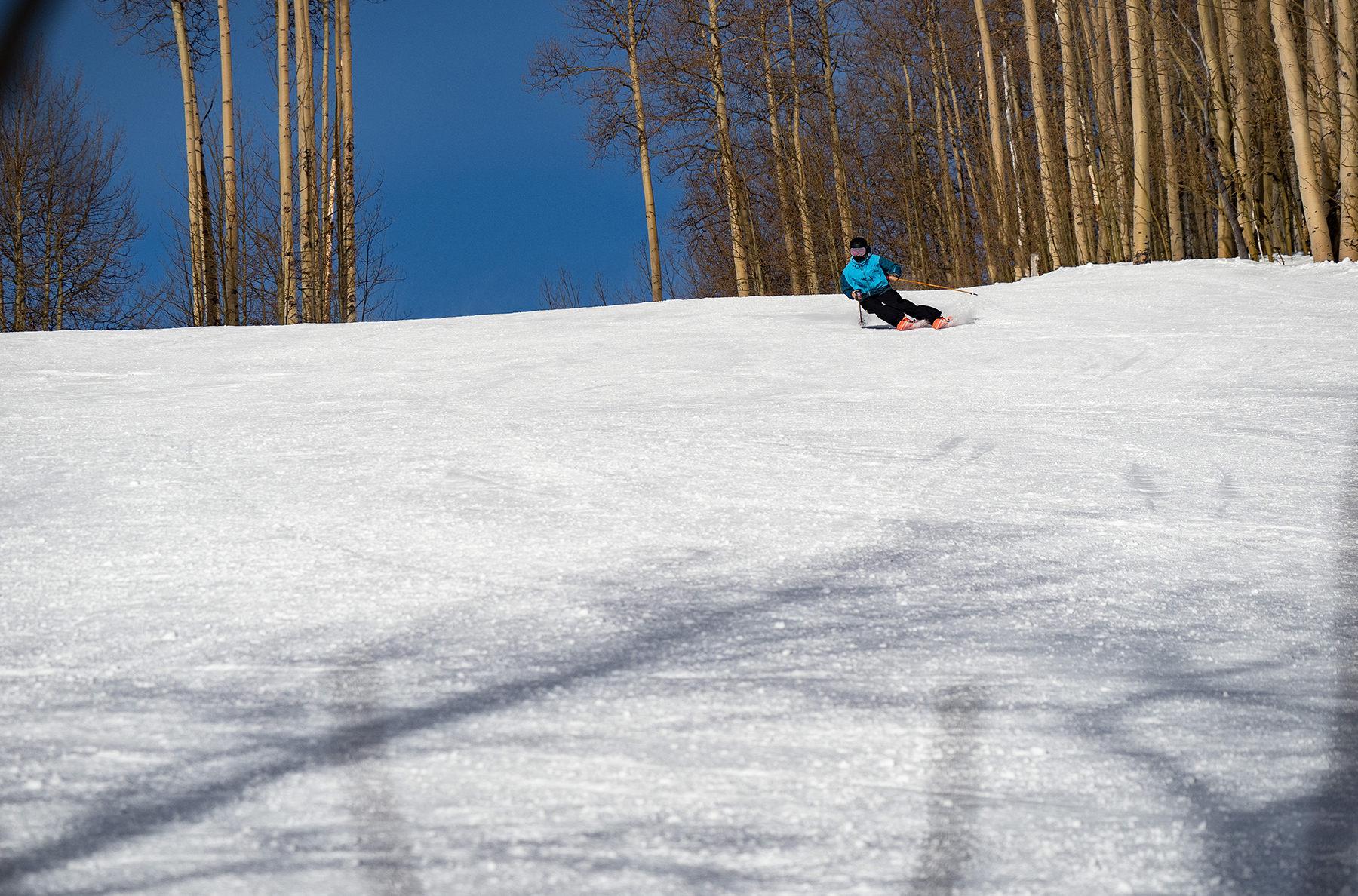
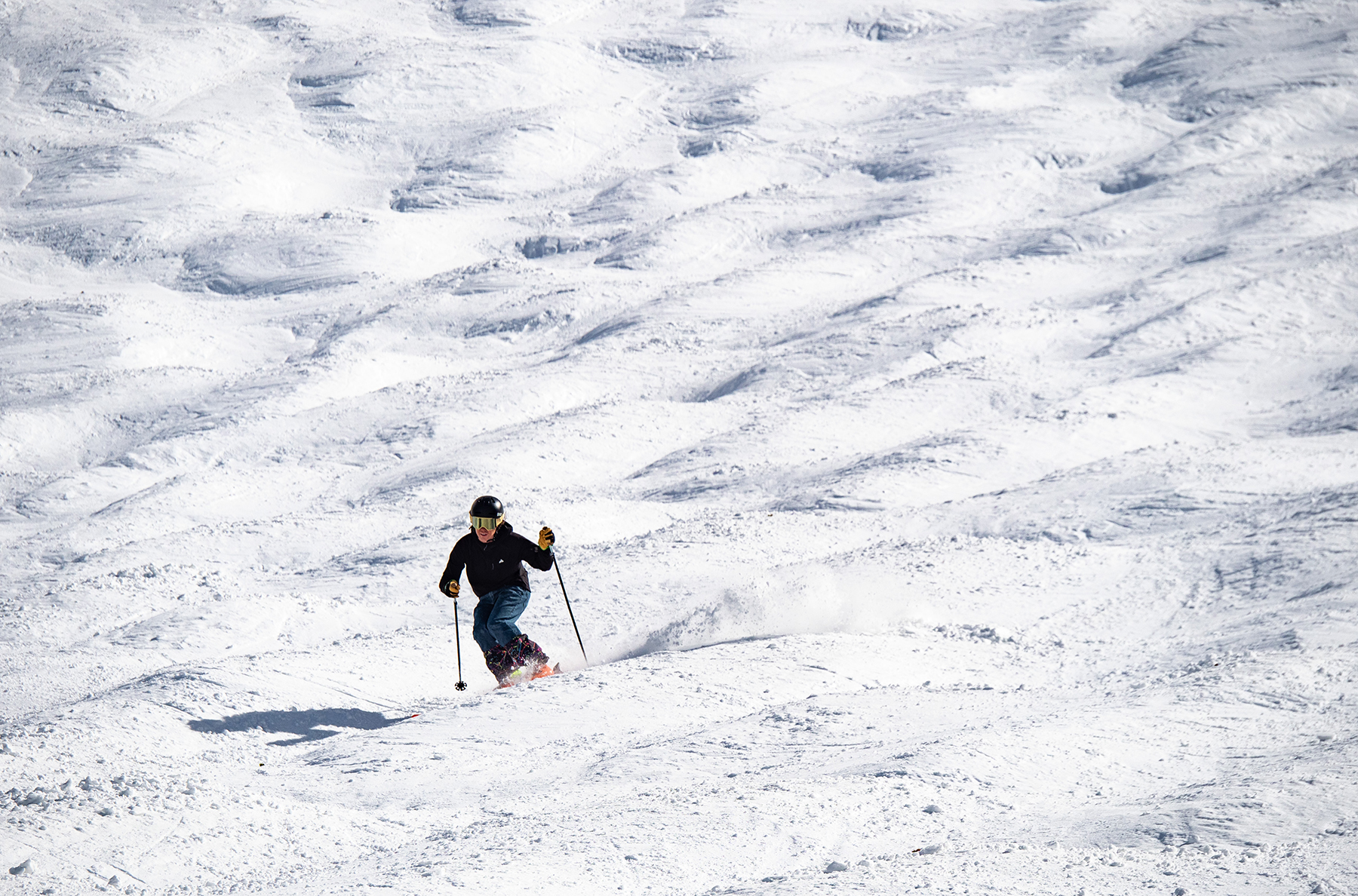
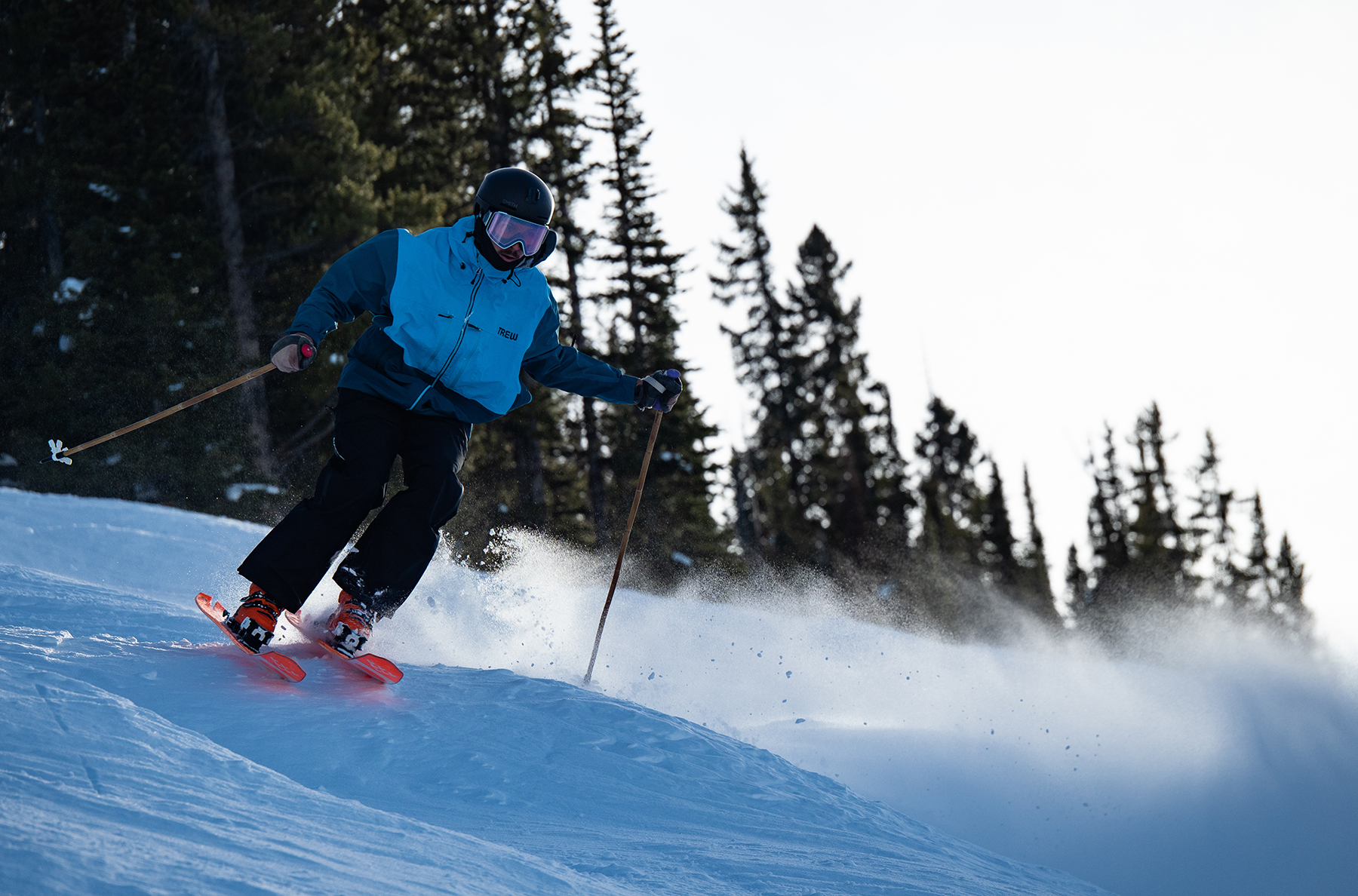
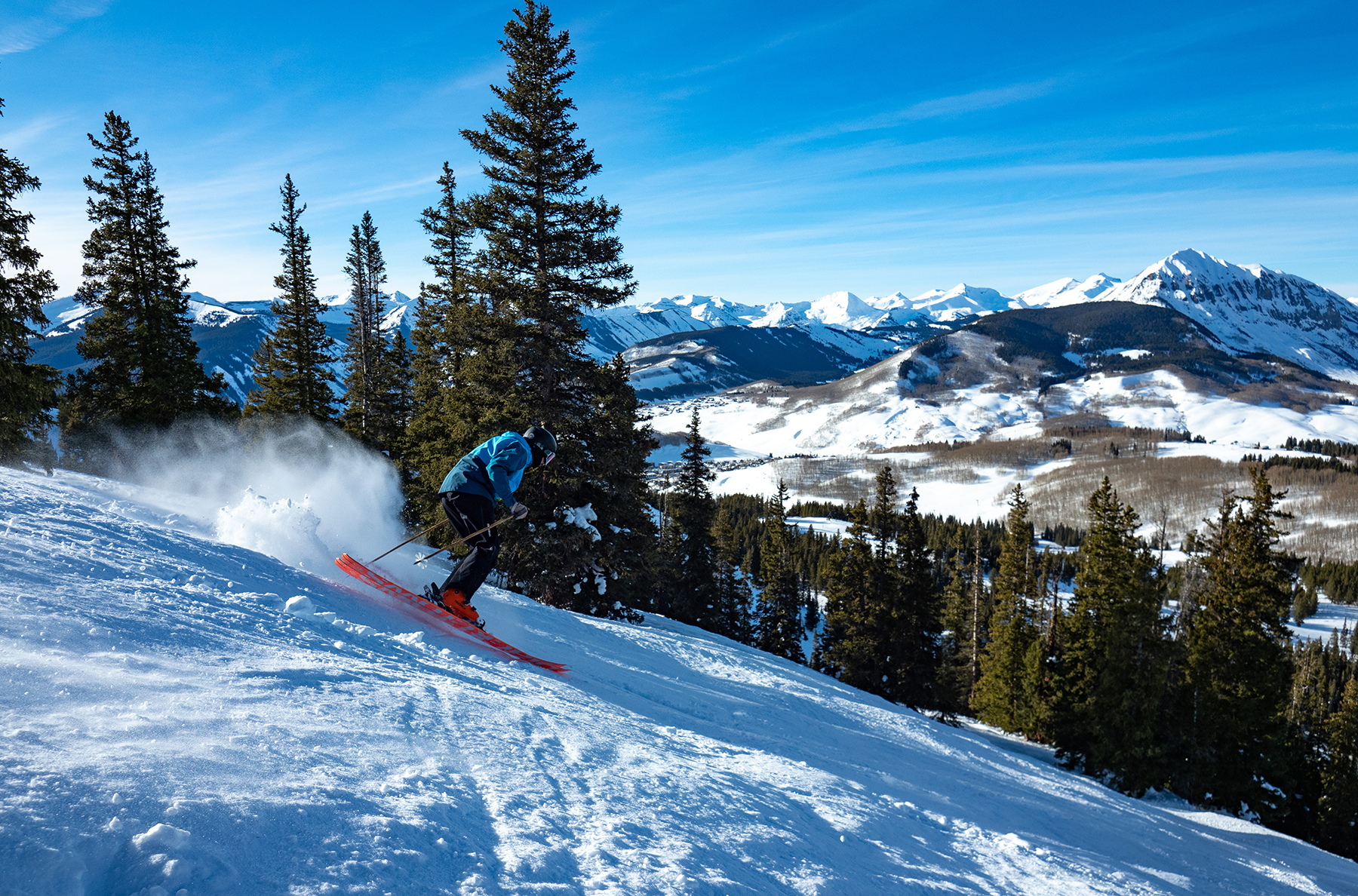
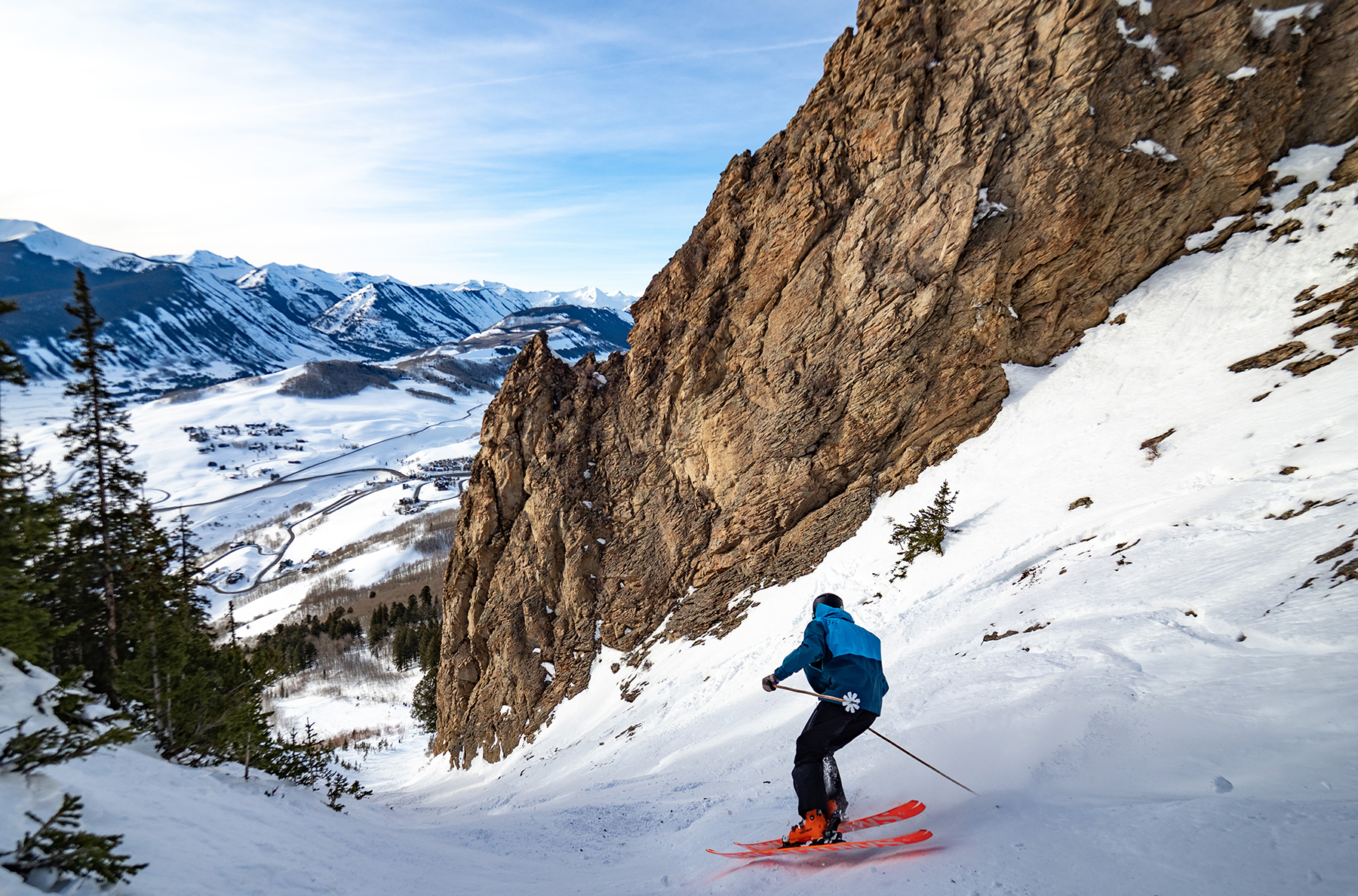
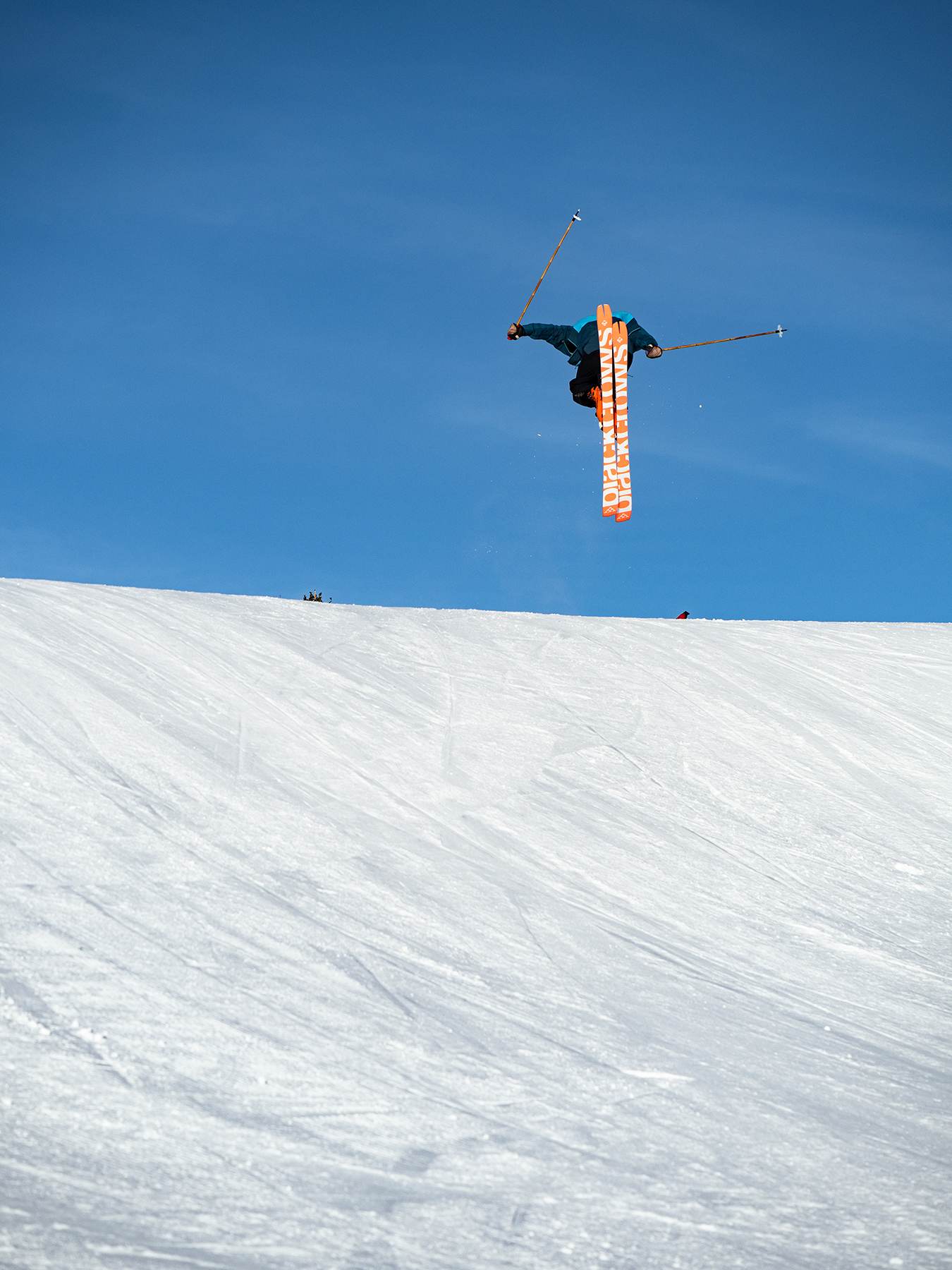
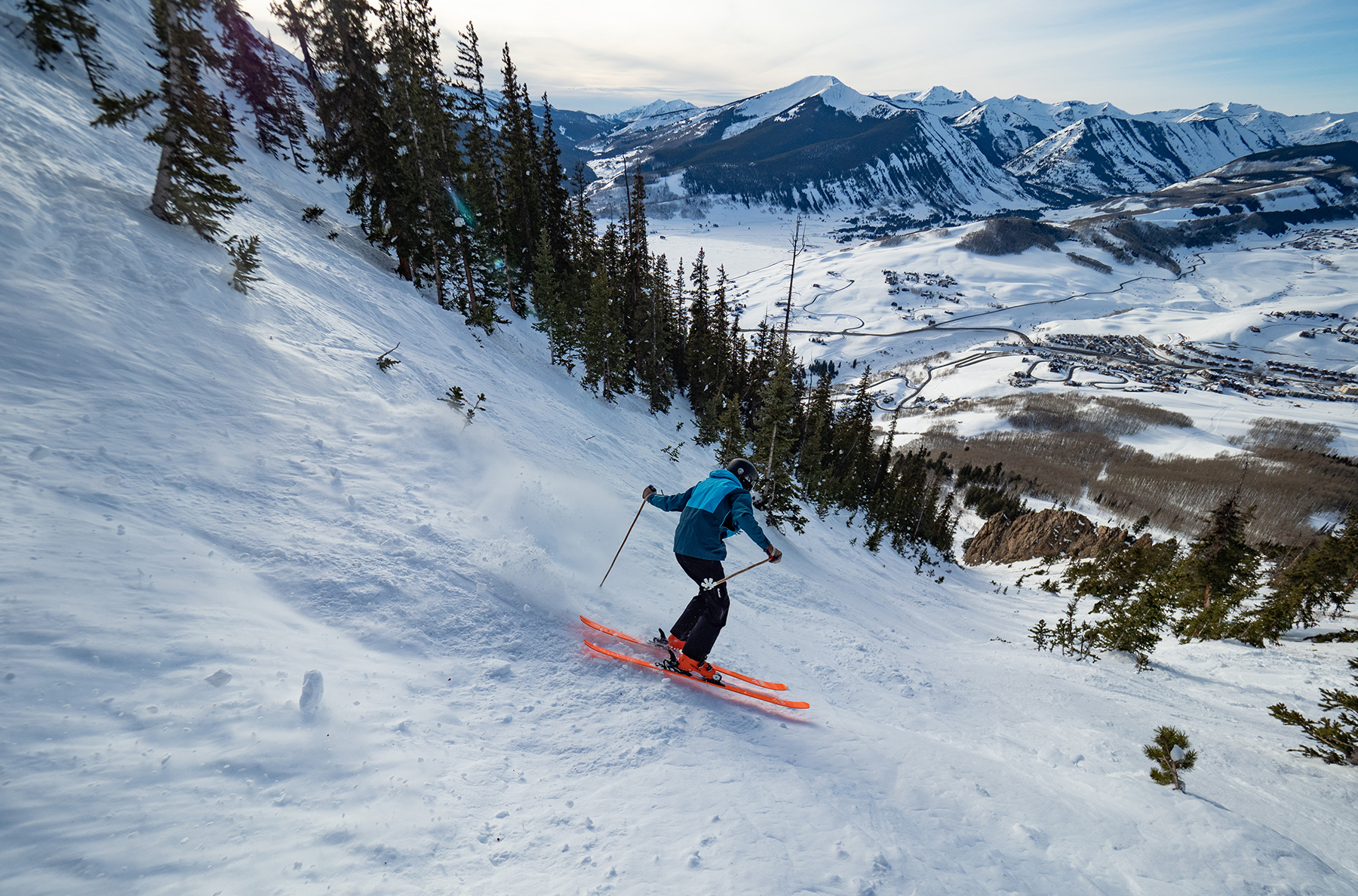
What happened to the full review? It was going to be published soon according to the Dec 10th (2021) newsletter.
BGR team. Thank you again. You mentioned that the mounting point is -3 cm, did you try it at -5, -6, or -7? I mount most of my skis with a demo binding so I can mess around with that and I think your team often does too? I read they recommend to go shorter to keep it playful, but I wonder what going with a 184cm and mounting it at -5 or -7 would do? Thanks again, Happy Chad
I just spent the 7 of the 8 days ( on the QST106 on the deepest powder day) skiing on Mirus Cor 177 at Purg under Chair 1, 3, 5, & 8 from early Dec and to early January. Conditions ranged from hard packed to tracked out powder and small bumps. The verdict these are ski give you the largest smile on your face for the fun factor, have just wanting to lean over and carve. One you get some time on you can use for more then for frontside groomer aka they are more versatile. Two day I spent follow a friend on snowboard around the mountain into all sort of terrain hard bumps, soft small bumps, chewed on day old 6 inch powder. It was alway fun when you can out carve him on tight arc at speed
My Current Ski quiver is Mirus Cor, Mantra M5 and QST106. Why I originally picked them up so I could ski with my kids and wife who are learning to Ski, Ability to ski slower with them and still have great fun on all the Green Groomer’s more simpler blue runs, ( Last year I was on the Mantra M5 with them) Also I wanted to have a playful carving ski to just go where I wanted to around the mountain especially when we did not get new snow for while.
I found the ski to have good edge hold on the harder snow days. I found it forgiving especially over Manta M5 when you technique was not perfect. Now I never pushed the Ski’s north of 37 mph. Most of the time this was mostly coming off Peace into chair 3 so you could glide all the way to chair would just drive long arcs and the skis stayed stable and quiet. ( they really glide nicely ) As I put more time into them the ability to Carve tight turn in soft snow bumps release you tail was great under Chair 5 and 8. Mantra would punish you if you got a little loose in style in the same bumps.
It is just a fun ski to ride on a smaller mountain like Purg. If I was on Birds of Prey at Beaver Creek I might want the Mantra or more Super G radius ski, but even then I might just want cut up the that run with 3x more rhythmical turn at lower speed and smile my way down the run..
Skied these today at Alta. We had our first real “dry spell” of the season so today was definitely an on piste day. Wow. This is the most fun I have had on groomers since I was a little kid.
The tail is no joke as it definitely acts like a combination trampoline rocket booster off anything you pop off of. It actually almost got the better of me when I was changing edges on top of a roller, got a little back seat and the ski boosted me into the air when I wasn’t expecting it and nearly wrecked.
I actually found that despite how easy the ski was to bend I could really drive them hard, by my 3rd run I was dropping my hip inches off the snow and grinning as it rocketed me into the next turn. Not as aggressive as when I was skiing a redster fis ski last spring, but not far off.
I may not ski bumps as fast as the reviewers here, but I found this ski to be a breeze to zipper line bumps with. The center mounting allowed for very easy pivoting and the generous tip and tail rocker allowed me to not get the tips or tails hung up.
I agree they don’t have a lot of suspension, so firm consolidated off piste snow definitely required a much slower approach than I typically ski it with, but it was more at home on this terrain than I was expecting for a ski that carves and jumps this well.
I think I found my “today would be boring unless” skis.
I’m 65 ex pro patroller at Mammoth now 250 lb’s been skiing on the MC for about 10 days now on manmade snow and some fresh in the UP. I skied them in 3-4″ of medium cold fresh snow and they were solid. The longer 184 length gives them some nice forgiving float. I did not ski them in trees or bumps but rollers, shoulders and side hits are a gas. When I got into 4-5″ of cold Michigan snow it was a toss up over my Rustler 9 180 but in the drifted areas the Rustler had more weight and width to not deflect and floated better. The MC skis light and shovels seem short mounted more centered.
I’ve skied MC on manmade shield OK and they are quick enough to just stick glued to the softer shoulders. They are super maneuverable and are pretty stable especially when the snow is the most medium fast and only a few times surprised me with a quick twitch.
When I get going faster, I kind of stand over the shovels to settle them and GS turns are fun but they are not billed as a powerhouse Volkl. Pretty much retired my Deacon 80’s for front side carvers now. The MC do a lot of things well and the big square shovels float nice in fresh ya almost want to stomp the tail to get the little camber midsection to really bend and pop. I’d imagine out west they are very versatile if you use the whole hill and like to turn. You do get more tired after a few hours just jammim turns and finishing with your tail peddle on groomed. Your cheeks get tired smiling 2.